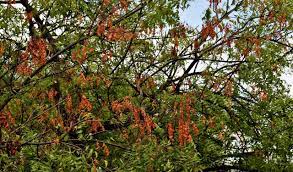
"Funga" Campaign
What is?
"Funga" Campaign
This topic is related to Current Affairs of IAS/PCS Prelims and Mains Exam General Studies Question Paper-3 Biodiversity and Environmental Conservation
September 04, 2023
In News:
- Recently, the United Nations Biodiversity has launched a Funga campaign to conserve fungi.
Key points related to the Funga Campaign:
- The campaign urges the world to include the word "fungi" ('Funga') along with "flora and fauna" to emphasize the importance of fungi.
- According to the United Nations Biodiversity, fungi are an integral part of life on Earth, supporting processes such as decomposition, forest regeneration and nutrient cycling.
- The International Union for Conservation of Nature (IUCN) has also supported "mycologically inclusive" language for the conservation of fungi.
The main objective of this campaign
- Recognizing the essential role of fungi in ecosystems, the United Nations aims to increase the importance of fungi, similar to plants and animals, in conservation efforts.
About Fungi:
- Fungi are a diverse group of eukaryotic microorganisms or macro-organisms that belong to their own biological group, distinct from plants, animals and bacteria.
- The structure like hair or cotton threads on a piece of bread is called fungus.
- Their nutritional system or method of nutrition is different. They secrete some digestive juices on the surface of dead and decomposing (rotting) things (organic substances) and convert them into simple and soluble form.
- After that they absorb this solution as food. This type of nutrition system in which organisms obtain nutrients from dead and decomposed organic matter is called saprophytic nutrition. Organisms that use the saprophyte system of nutrition are called saprophytes.
- Fungi grow on pickles, leather, clothes, trees, plants and other substances. They also grow in places which are moist and warm.
- The rainy season provides the best conditions for the growth of fungi. For this reason, many things get destroyed or become unusable during the rainy season due to the growth of fungi.
Features:
- Eukaryotic: Like plants, animals and protists, fungi have complex, membrane-bound cell organelles and a true nucleus.
- Heterotrophic: Fungi are primarily decomposers or saprophytes, meaning they obtain nutrients by absorbing organic matter from their surroundings.
- Secretion of enzymes: Fungi secrete enzymes to break down complex organic compounds into simpler substances, which they can then absorb.
Ecological Benefits of fungi:
- Fungi share their habitat and nutrients with each other due to symbiosis. The fungi that live in the roots of trees provide nutrition to the trees, which in turn helps them absorb water and nutrients. This relationship has special significance for the tree.
- Some organisms called lichens have two partners. One of these is algae and the other is fungus. Chlorophyll is present in algae while chlorophyll is absent in fungi.
- The fungus provides habitat, water and nutrients to the algae and in return the algae provides food synthesized by photosynthesis to the fungus.
- Fungi play important roles in various ecological processes such as decomposition, forest regeneration and nutrient cycling.
- Incorporating fungi into conservation strategies ensures a more holistic approach to ecosystem protection.
Harmful Effects of Fungi:
- Fungi are also responsible for various types of diseases in humans and animals. Athlete's foot (caused by dermatophytes), ringworm, histoplasmosis and aspergillosis are diseases caused by fungi.
- Some fungi produce toxic compounds called mycotoxins, which can contaminate food and cause health problems when consumed.
- Fungal diseases infect and damage crops and plants. Rust, powdery mildew and various types of fungal blight diseases are caused by fungi in crops.
- Exposure to fungal spores, especially in indoor environments with high humidity, can cause allergic reactions and respiratory problems in some individuals.
- Conditions such as allergic rhinitis and allergic bronchopulmonary aspergillosis are caused by fungal allergies.
- In the absence of protection, fungi can damage materials such as cloth, leather and paper.
Mains Exam Question
What is Fungus? Discuss their important and non-important effects in the ecosystem?